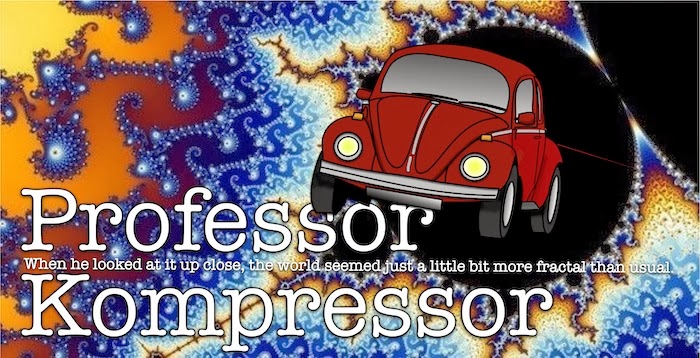Professor Bullfinch, with
his constant companion, Dr Grimes, spent more and more time in the laboratory
testing and analyzing the anti-gravity liquid. It became clear that whatever
was painted with the liquid resisted gravity and would fly out away from earth.
From
Danny Dunn and the anti-gravity paint
A while ago I tried to figure out how one would best control a small
black hole. It was a thought experiment, of course, but thinking about it was quite
interesting. I decided that what was required was a bit of antigravity, something
that made gravity push instead of pull. Should be easy, right? At the end of
the day, I figured that antigravity paint would be the perfect solution to
my problem.
At first, this seemed
quite far-fetched. Crazy enough that no one would have thought about it before?
Not at all! In fact, the exact same idea formed the basis for the first in the
series of Danny Dunn books I mentioned in an earlier post. This irked me a bit,
because I (obviously) would have liked to claim the idea for myself. But, instead
of writing to the patent office, I ended up ordering the out of print Danny
Dunn book from 1959. Read it, enjoyed it and generally felt less grumpy about the
whole thing.
The idea of a material
that repels gravity, and which can be used to propel space rockets, is
obviously much older. It famously goes back to the Victorian days and H.G.
Wells’ 1901 masterpiece The first men in
the moon. The key to that story is a gravity blocking substance called "Cavorite”
after its inventor. A similar idea was exploited even earlier, in 1894, by J.J.
Astor in his book A journey in other
worlds. Astor was an interesting character. Extremely rich he died on the
Titanic and his book (even though it is set in outer space) provides an interesting
perspective on how people in that era viewed other civilizations and cultures.
So what exactly is
antigravity? It's obviously just gravity with the sign wrong! The basic idea is
to create an object that does not experience gravity. This might not seem too
difficult, but gravity is quite special in that it always attracts. The basic
reason is clear once you compare to electromagnetism. Electric charges come
with different signs. Like signs repel, but opposites attract. In contrast,
gravity only has one "charge", the mass of the object, and it is
always positive. So... no repulsion. Unless you think creatively.
The scientific quest
for antigravity has had intriguing twists and turns. An entertaining angle
relates to the successful businessman Roger Babson who formed the so-called
Gravity Research Foundation in 1948. The aim was to study ways to reduce the
effects of gravity. From the view of mainstream science the efforts were
initially on the cranky side of respectable, but at the same time the
Foundation arranged various conferences that were attended by quite
"reasonable" people. As time passed, the Foundation turned its
attention to trying to understand gravity better rather than controlling it. The
main activities stopped when Babson died in 1967, but the organization is still
running an annual gravity essay contest. The stated aim remains to figure out
antigravity, but most of the submitted "stories" negotiate a safer
territory. The prize-winning essays are often entertaining and serious in equal
measure. The aim is obviously not fiction, but the essay format (and perhaps
the lack of peer review) suggests a looser reign than usual. In recent years
the contributions have tended to present quite serious science and you will find
top quality scientists (including a Nobel laureate) among the past winners.
I have mixed feeling
about this gradual change. On the one hand, it is a positive sign that the
serious side of science conquers the territory of wild speculation. At the same
time, one has to be wary of group-think and the risk that everyone starts
running in the same direction. Without creative thinking how do we discover the
future? We had better not forget that the best ideas often seem just a bit
absurd at first. I mean, think about the curved space and wonky time of Einstein's
relativity. Weird and wonderful at the same time.
In that spirit, how
about this?
Anti-gravity yoga!
At least it would be
relaxing.
